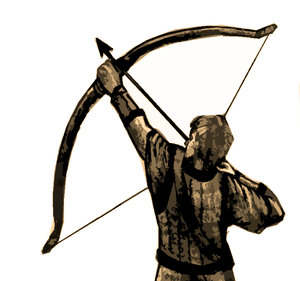Bows and Arrows
 All work and no play makes Jack a dull boy sums up today's feeling. Volts, motors and cables are all very well, but every now and again we need a change. Today's change of topic is the longbow.
All work and no play makes Jack a dull boy sums up today's feeling. Volts, motors and cables are all very well, but every now and again we need a change. Today's change of topic is the longbow.
It starts with me reading one of the Horrible History books with my son (Groovy Greeks). Arrows were mentioned which lead to the discussion of the bodkin arrow head. To show him how much work was required to make one of these arrow head I started searching videos on Google and YouTube. During this process we came across the following interesting documentary on the longbow as a weapon. Being a history video which was able to keep my eight year olds son attention for nearly an hour, I think it deserves a bit of publicity.
In addition to the above a couple of other interesting videos we found:
- How to make a bodkin arrow - a black smith making a bodkin arrow head. Good to Illustrate that these didn't grow on trees but had to be made by hard work.
- Medieval arrow making - interesting video on the making of an arrow. While these do sort of grow on trees and the video uses not very medieval methods, it does show that to make an arrow is more time consuming/complex then most people would realize.
A few final bits of information:
Using a longbow required great muscles in the upper body (not just the arms) and the arrow was aimed by looking at the target, not down the arrow. To develop these muscles and skills the best archers would start training from the age of seven.
If you like reading I can recommend Azincourt by Bernard Cornwell . Good historical faction related to the longbow and the men who wielded them.
Imagine being at the battle of Crecy (26 August 1346) where the English had around 7000 longbow men. A skilled longbow man could release 10 to 12 arrows per minute - that’s a rain of up to 70,000 arrows per minute on the attacking French. Not something I would want to run into.